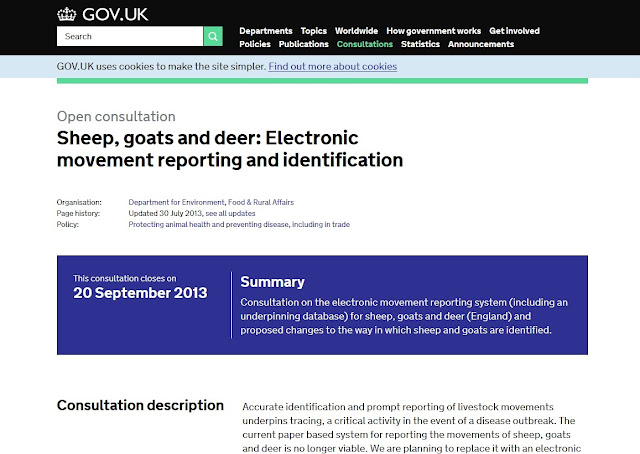samedi 31 août 2013
Moments.........from the GEMO Show
mercredi 28 août 2013
Eyeing up the competition
lundi 26 août 2013
GEMO Concours National 2013
 |
| Vaillant Ewes |
With limited places available and a high standard of sheep in general it can be hard to provide encouragement to newer breeders and reassure them of the standard of their sheep if they are not in the select group of prize winners. The certificates of conformity provide not just breeders but prospective purchasers with the assurance that they are buying sheep that can be considered of the breed.
I chose only two sheep to take this year both home bred, one for the competition and one for a certificate of conformity. Lets just say I wasn't disappointed on either score. I'll post a selection of photos from the day in due course. For now just a couple of candid shots.
samedi 24 août 2013
samedi 17 août 2013
lundi 12 août 2013
Chinchin!

dimanche 11 août 2013
Dyed in the Wool

samedi 10 août 2013
Sizzlin!
mardi 6 août 2013
Under The Skin....EID
Dont you just love the way these types of consultations are brought in as quietly as possible, hopefully no one will notice. Fortunately someone did and I for one am very pleased that this issue has yet to go away.
There has already been a dispensation granted for some parcs here in France who maintain ornamental flocks of sheep on view to the public to dispense with plastic ear tags in favour of subcutaneous microchips as was announced in the most recent GEMO bulletin. Thank goodness some advocacy exists out there for breeders who are not satisfied with the current one cap fits all approach. Its a shame that the option to microchip was not investigated more throughly at an earlier stage. I look foward to future announcements. LINK to the site page and consultation paper for the UK.
Puce électronique sous-cutanée bien tôt pour moutons non-destiné pour la consomption? Qui sait.... à voir.
samedi 3 août 2013
La Paperasserie
With any flock of sheep comes a certain amount of paperwork. Some of which is required for keeping track of health, breeding and the flock in general. There are other formalities to ensure that state administrative requirements are met. In general once the systems are in place, the paperwork pretty much looks after itself and updating any changes within the flock is relatively straightforward. For the last three years generating any administrative paperwork to meet the requirements has been a logistical nightmare. The failure to foresee the difficulties associated with the introduction of electronic identification particularly in relation to the Ouessant sheep has meant that many flocks have gone three years without the means to satisfactorily identify animals. This has included animals coming in from outside flocks as well as lambs born to the holding.
What a farce! In addition national requirements for flock testing for brucellosis has meant that there is a REQUIREMENT to have animals properly identified to ensure it's possible to tally up blood results with individual sheep. Added complications of the
Continual delays in the introduction of EID tags which
The flocks numbering system might be back on track in about three more years, the flock sports a variety of tags and coloured lumps of plastic. I have no satisfactory system for identifying lambs that doesn't involve retagging at a later stage and still the sheep lose their tags and now ears in fences.
A congratulatory pat on the back for finally bringing in an alternative to cattle sized tags ............what price progress.
jeudi 1 août 2013
The Ouessant Sheep originates from the island of Ouessant, part of a tiny archipelago just off the north coast of Finistere, Brittany. The island of terror as it was known to some, was swept by the full force of the atlantic’s weather, the hardy sheep adapted to survive on poor grazing from salty clifftop meadows. It was the women of the island that raised the sheep, renowned for their black wool to weave into cloth known locally as berlinge and their meat with its sweet and delicate taste.
La race "Mouton d'Ouessant" est originaire de l’île d’’Ouessant qui fait parti d’un petit archipel au large du Finistère, Bretagne. L’île de l'épouvante comme c'était connu par certains était balayé par les intempéries de l’atlantique, ces moutons rustiques s'adaptaient à survivre sur les pâturages pauvres des falaises salées. C’était les femmes de l’île qui élevaient les moutons réputés pour leur laine noire à tisser « la berlinge » une étoffe régionale et leur viande avec un goût doux et délicat.




















